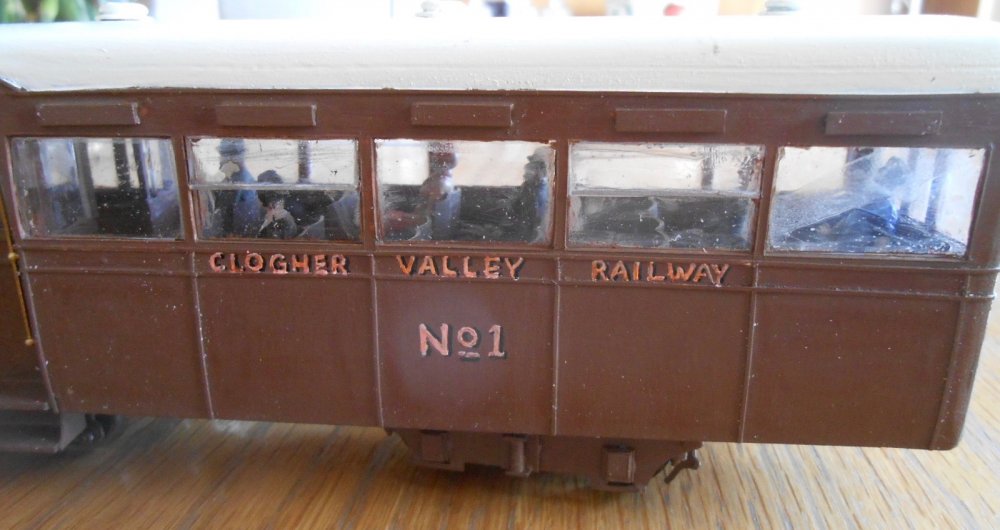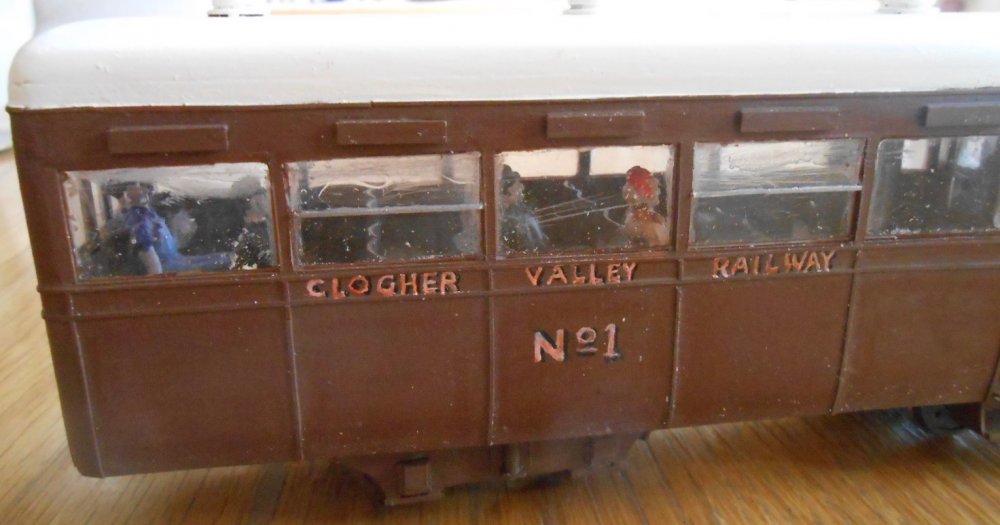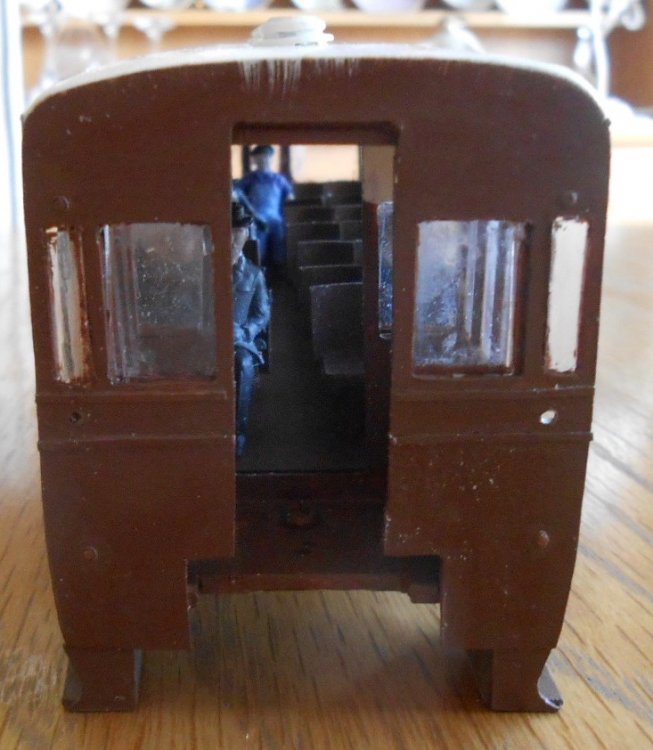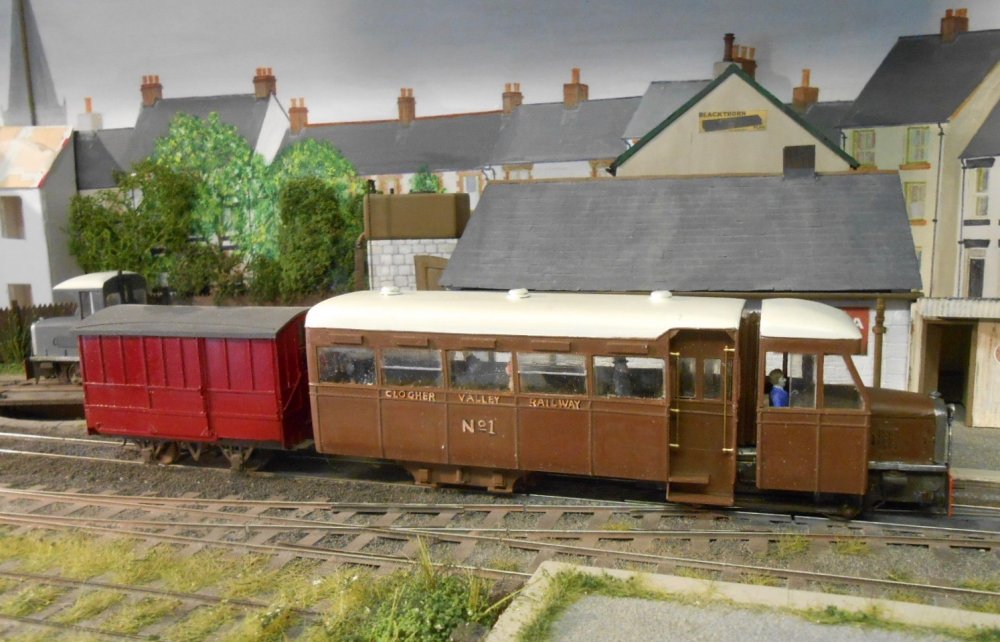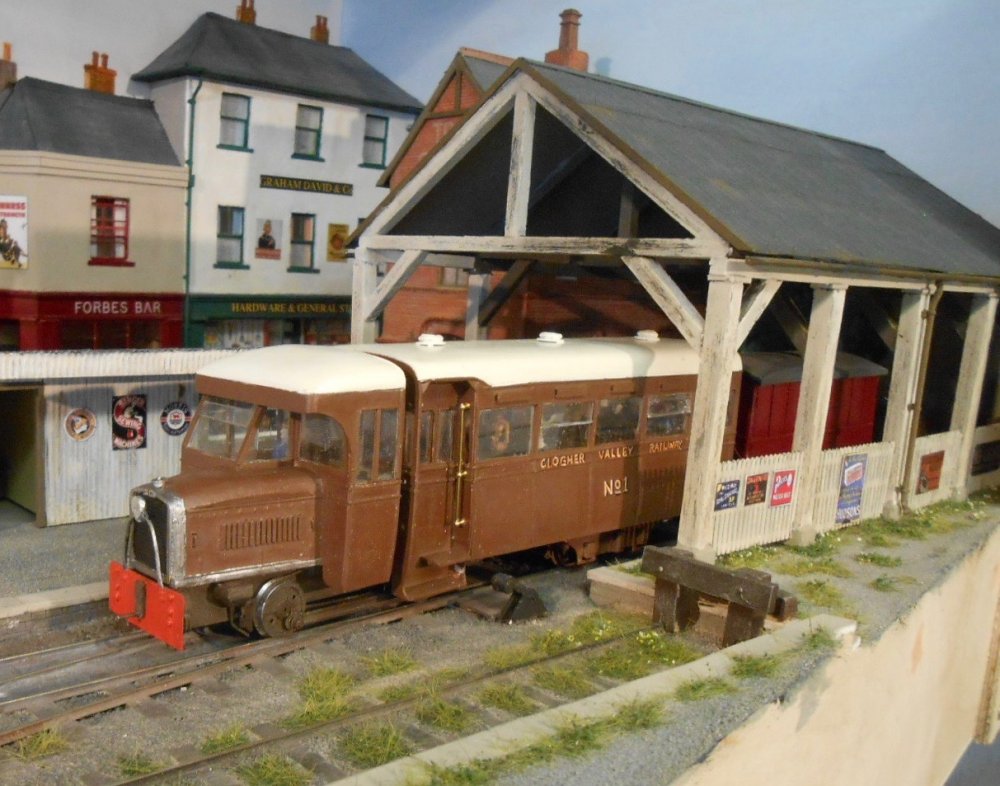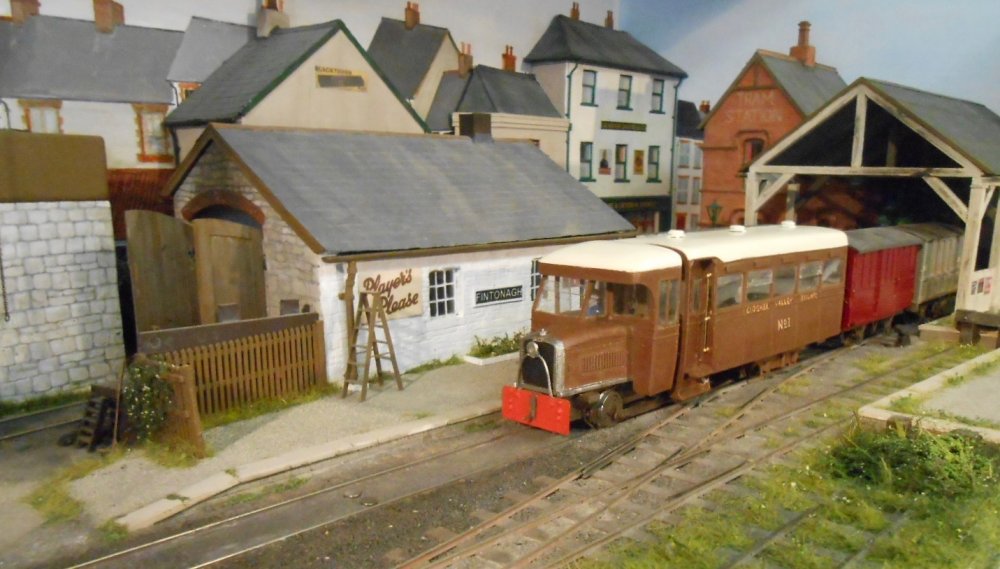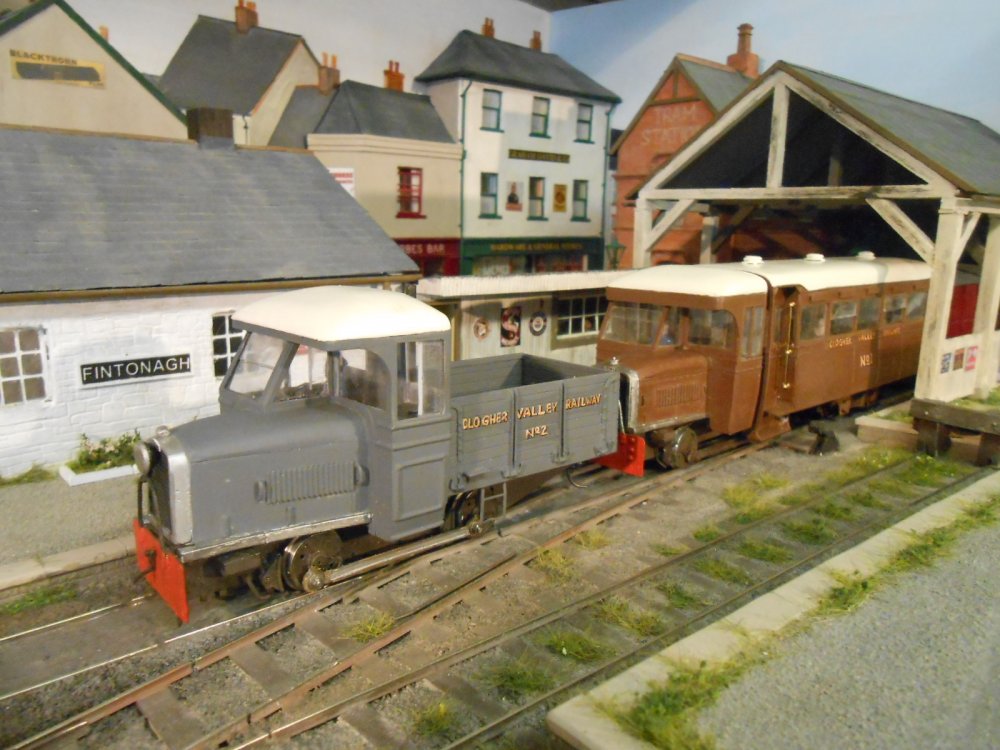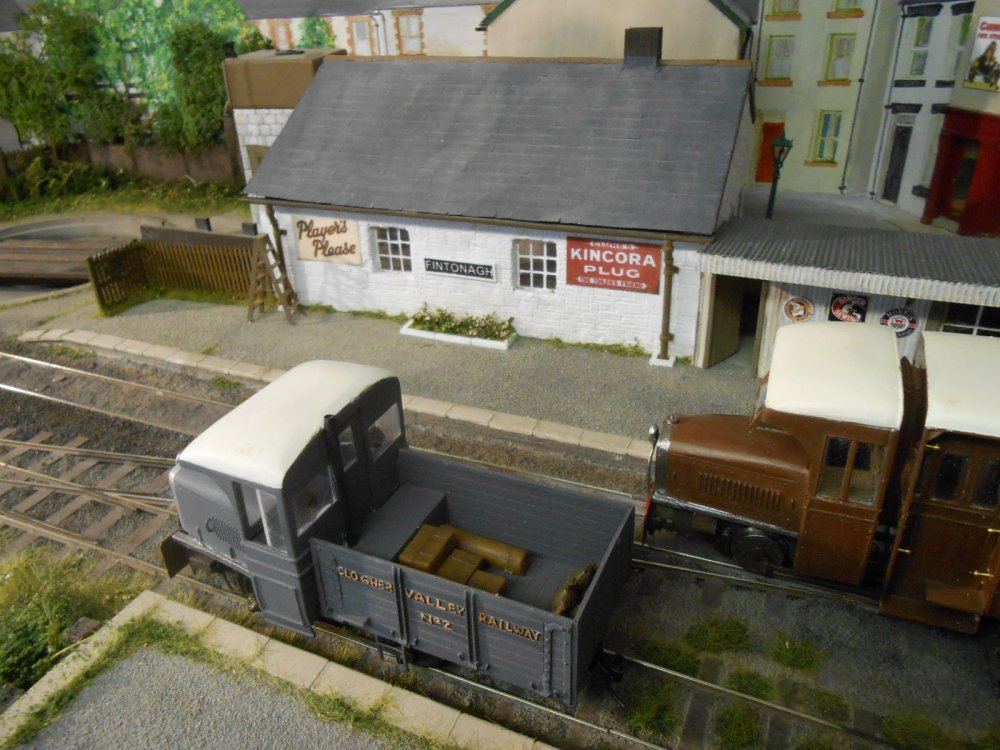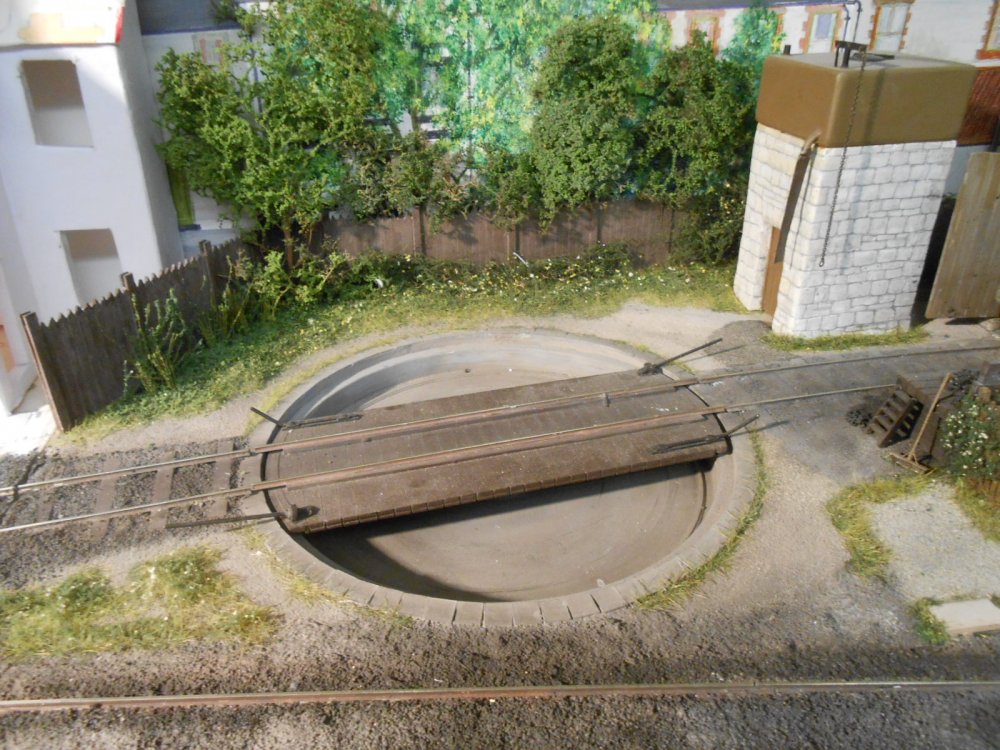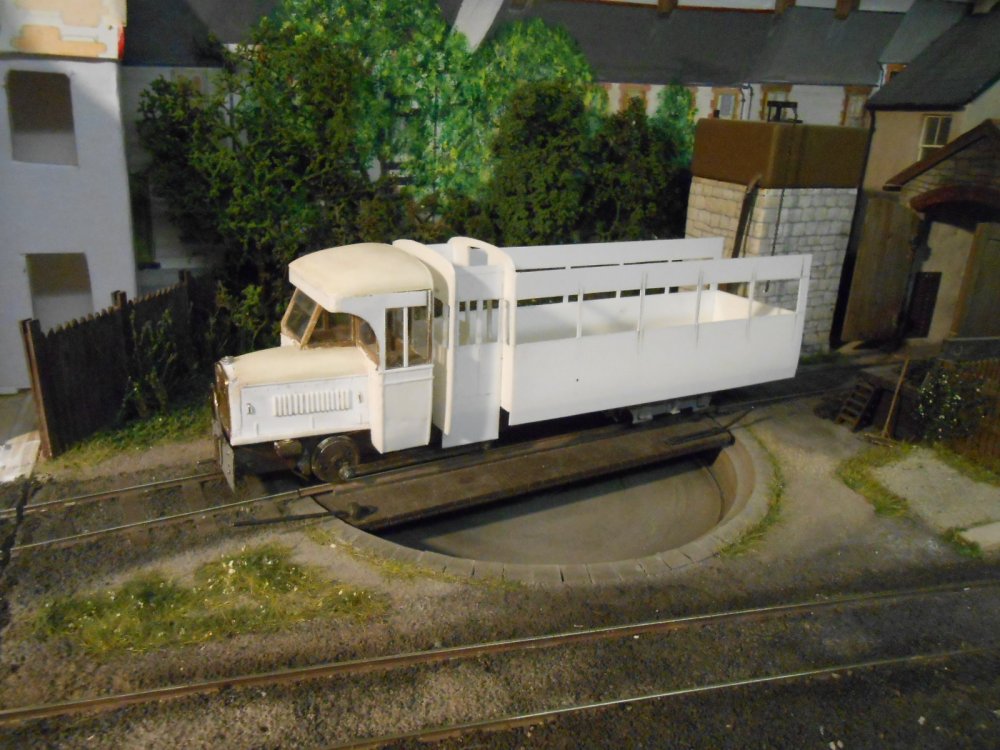
David Holman
Members-
Posts
4,359 -
Joined
-
Last visited
-
Days Won
117
Content Type
Profiles
Forums
Events
Gallery
Everything posted by David Holman
-
That is one very fine signal box. Have built a few in my time and for me, they are always one of the more challenging buildings to get right & that is before you realise you have to fit the interior.
-
A lot of skin - it makes up the majority of household dust. That looks like several years of not being used, while are the middle wheels missing their treads? Fairly horrible & crude flanges by the look of them & are they traction tyre or is that rust on the wheel treads? Either way, cleanliness before Godliness where model railways are concerned - track, wheels and mechanisms. There is absolutely no substitute if you want good running.
-
I would say it is a fair way short. The NCC moguls had 6' driving wheels, the 76XXX were only 5'8. The footplate on the latter is noticeably higher, while the NCC loco has very different dome & chimney. Add in the front footplate, smokebox door, handrails, buffers and all sorts of plumbing and it looks like a lot of work. However, all these would be doable I suppose if the key dimensions match up: wheel spacings and boiler diameter especially. Otherwise, however much you do, it will still not look like it is supposed to. Depends how accurate you want it to be.
-
As a way of modelling wide open spaces, scale length trains etc, N gauge is great. However, 2mm finescale looks and works a whole lot better, so would hope that any RTR stuff would be capable of conversion to 10.25mm gauge. If so, I could be very tempted. But then I would say that, wouldn't I?
-
Judith Edge kits are always good quality and go together well. Definitely worth a look.
-
Looks pretty darned good to me. I have limited prototype knowledge of these coaches, but they certainly look the part. Ratio kits must hold the record for being converted into something else and it just goes to show what can be achieved, with a bit of care and skill. Lovely job
-
Nice thought, but I have to agree with Andy. It is ok for signal spectacles and similar small, round holes, but not these apertures.
-
Thought I'd better show you what is bugging me about the railcar... The glazing at the rear was missed when I put the roof on. As you can see, there is a gap at the top. Measure twice, cut once etc. The rest of the glazing is just poor workmanship I'm afraid. When I eventually rebuild the trailer, I must make it so the roof is removable and the glazing pants can slide in after painting. However, from a distance of a couple of feet or more, the model is ok, while if you are looking at the photos on a laptop screen, then the model is at least 4x life size [it is actually just 7" long]. At least it has captured the character of the prototype and hopefully I can keep that when it is eventually rebuilt.
-
Thanks chaps, but were you able to see closer you would note that: - there are gaps where will glazing does do not fit properly on both ends of the trailer - half the panes are stained on the inside by solvent; - the trailer sides go inwards at the waist, I think this happened when I was filing the roof and squeezed the body; - there is paint on the inside of the glazing that I can't get to to clean off It all stems from my decision to fix the roof on before filing it to shape. Seemed like a good idea at the time, but I hadn't noticed all the issues with the glazing. This is sandwiched between inner and outer layers, so with the roof fixed on is impossible to replace without a complete rebuild. The trouble is that once you know something is there, it sticks out like a sore thumb. Oh yes, and the paint job may look alright in the pictures, but is nowhere near like you get from an air brush or spray can. At least the positive comments make me feel better, so many thanks for that. Am sure it will be fine for a while and with a compensated chassis, plus pick ups on the trailer bogie, should run well, but if I have time before the Uckfield show in October, the trailer will get rebuilt. The audience are very close at this venue and given they pay good money to come in, I always feel I owe folk to do the best I can. Should be able to salvage the bogie, seats and roof, while the tractor unit is (fingers crossed) fine. It may even benefit from simply being left alone for a bit while I do something else. This has worked before, but I'm not holding my breath! I had (proper) flu in early December and the lyrics of David Crosby from the great hippy anthem 'Almost Cut My Hair' on the Déjà Vu album come to mind: "Because I had flu at Christmas, I'm not feeling up to par, It increases my paranoia, like looking in the mirror and seeing a po-lice car." Well, I know what I mean. I think!
-
Soldering white metal - proper job!
-
Back to the CVR Railcar. After the diversion of the G class diesel, I thought I'd better get back to my Clogher Valley project and Railcar No 1. It was mid November that I last did any work on it & had got as far as completing the tractor unit; over Christmas, I've been doing the trailer. This has been a total scratch build, apart from the wheels. The body is plasticard and the bogie is brass. It has proved to be quite a challenge, especially around the entrance doors, as there are all sorts of odd angles and curves, plus the trailer has to articulate from the tractor unit [just like a big lorry]. There was a lot of trial and error! The roof was also a bit of a pain & in the end I made it permanently fixed to the body. It is several layers of 80thou plastic sheet, laminated together and filed/sanded to shape. With hindsight, that was not a good idea, because I really did not do a very good job with glazing the windows & have no way of putting in new 'glass'. Eventually, I can see me doing a mark 2 version, or maybe buy the Worsley etches, because the paint job hasn't worked out as well as I'd liked either. I brush painted, using Tamiya acrylics and the finish is not as good as using an air brush. A bit of work with T-Cut has improved things a little and overall it is ok as long as you don't look too closely. For the lettering, I bought a handwriting set [dipping pen with a variety of nibs] and did the letters by hand using white acrylic ink. Then went over this with a fine tipped dark yellow felt tip pen, before adding black shading with a 0.01 permanent marker. Have also been doing a bit more work on the Unit. This did not have any lettering [so used the same method as above], plus needed a load in the pickup truck type body, to cover the nut which fixes it to the chassis. Found a few parcels in the spares box, plus some more Merit mail sacks, the latter masquerading a spuds. Much will depend on how the rest of the project goes, as I am on a deadline for the Uckfield show in October. If all goes well, then a new trailer is certainly on the cards. Both still need weathering, but here a a few photos of progress thus far.
-
I think we already know, Noel. While there are still train sets available at reasonable prices & in a variety of themes, railway modelling is mostly the preserve of the older generation. Add in the fact that a 4mm scale locomotive can cost well over £150 and one can see why a disposable income certainly helps too. The rise of electronic games, computers etc means that a model railway has not been top of the list to Santa for quite a few years. Another issue is the 'throw away/ephemeral nature of many toys and games. For example, one of these days, I am going to weaken and buy a small radio controlled helicopter for 20 quid or so, but I also know that after a couple of hours I will be bored with it - assuming it doesn't break beforehand. In my primary headteacher days [late 90s -early 00s] I used to like asking the kids what they had got for Christmas. One assembly, I had to actually ask if any of them had got any toys, because all the answers involved computers, Xboxes, clothes & music players. Paints, crayons & cuddly toys were in similar short supply. Like the rest of my teaching career, the school was in a tough area and though rarely short of material goods, the kids did not all get the adult attention they needed at home. The ones that did, really stood out, because they were SO much easier to work with. However, the benefits of model railways don't stop in childhood. There is a growing amount of anecdotal evidence that railway modeller are significantly less likely to develop dementia, because the hobby keeps the brain active. High blood pressure, resorting to drink, excessive bad language etc another matter of course!
-
Yup, take your time and enjoy the journey!
-
Apart from not being 21mm [!], sounds like a good plan JB. Don't want to muddy the waters on that one though. The one thing you haven't mentioned is 3' gauge. With 12mm track it would be the correct scale/gauge combo and there are a few things out there... Re scenics, suggest you get yourself a copies of Gordon Gravetts books on the subject - Grass, Weeds etc for certain and Trees too. Very readable and easy to apply too. All my own stuff is nothing more that replicating what he describes.
-
As well as good modelling, there is a considerable degree of artistry in this project. Lovely job.
-
Fintonagh's PECO N gauge turntable has been adapted by adding an extra layer above the well, so with a wider/thicker deck for 21mm track, it is now 168mm diameter, so a scale 42' in 4mm scale - or more to the point 27' for 7mm narrow gauge. It happily takes my developing CVR Railcar, though as you can see, the overhangs are prodigious! Arigna's Dapol/Airfix TT scales out at 60' in 4mm scale. As you can see, I again made it longer, in order to take the railbus and G2 in 7mm scale.
-
Not flimsy, Tony, but needs work. I turned mine upside down to make it underslung. Also, it is quite big, being 60' diameter in 4mm scale. No brainer for me though, a motorised Metalsmith 42' model in 7mm is over £200...
-
21mm gauge track; the pros and cons?
David Holman replied to jhb171achill's topic in Irish Model Layouts
Have a look at the first page of my Clogger Valley Project and you can see photos of my 21mm track. Ok for 3' narrow gauge in 7mm scale, but to EM standards, to the same in all respects. Each point took about an hour to make, including filing the rails. -
Surely every self respecting Irish model railway needs a turntable! Also, one adds a useful extra dimension to operation. On Arigna, only the railcar doesn't use it, because it is too big, while kids of all ages love seeing engines being turned. Arigna's TT is a £4.99 Dapol/Airfix plastic kit, designed for 4mm scale. It uses a Frizinghall Model Railways hand cranked kit (a few bits of Meccano), plus the Mark One human eyeball for alignment. However, though cheap, the Dapol kit has no provision for powering the track on the TT itself. Mine uses 7mm scale plunger pickups in the well wall bearing on brass plates on the girder ends. The Peco ones use a neat system in the central boss. I have the N gauge version on Fintonagh, with the Frizinghall electric motor kit. Rather noisy and slow though, so may yet replace with a hand crank... Would say TTs are not for the faint hearted. They will need either a well cutting in the baseboard surface, or track raiding if a surface mounted one is used. Automatic alignment requires complex electronics too, which is why RTR versions are expensive and I don't go there! Definitely something to aspire to though.
-
Good on yer. Well done.
-
21mm gauge track; the pros and cons?
David Holman replied to jhb171achill's topic in Irish Model Layouts
That's a shame JB, but understand the reasons why. In terms of why 21mm is a virtual non-starter in Ireland, that is hard to quantify when run alongside EM and P4 in Britain. Am guessing most know it all stems from the early days of HO, when the smaller loading gauge of British engines meant it was very difficult to fit the mechanisms of the time. Equally though, that was precisely why EM and P4 started (the former in the 1950s), because people were unhappy running scale trains on narrow gauge track. These days, I'm not sure EM and P4 could be described as 'niche'. Minority perhaps, but both have a healthy following, with their own dedicated exhibitions up and down the country. One can only wonder why things didn't take off in the same way in Ireland? Maybe the lack of RTR has been a factor, though that is hardly the case today. My only other thought is that, as far as this forum is concerned, the number of layout builders far exceeds the number of loco builders and maybe if there had been more kits available in the past, then more folk might have taken the plunge and learned that such things are not alchemy after all. However, it won't stop me continuing to fly the flag! -
Don't forget to use the old engineer's trick of putting a bit of spot on the drill bit/hole. Does a good job of lubrication. Expect the drill bit to clog up when going into white metal.
-
What a great thing for a dad to do for his son. Way better than anything straight out of a box. Great satisfaction for dad, because he's made it himself (and now clearly better than the original), great satisfaction for the boy because he will own something unique. Nice to think that a fine partnership could develop from here over the years.
-
Approaching half a million views. Amazing.
-
21mm gauge track; the pros and cons?
David Holman replied to jhb171achill's topic in Irish Model Layouts
It has been good to see that there is some genuine interest in doing 5'3 in these pages. Maybe a good step forward would be for someone to do a blow by blow account of how to convert a Murphy's diesel to show that such things are not in the realm of watch making. A similar thread or two on basic wagon and coach conversion might be valid too. All my fingers and toes are crossed for you, JB.
.png.c363cdf5c3fb7955cd92a55eb6dbbae0.png)
